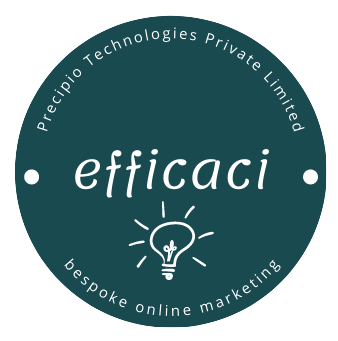In today’s hyper-competitive marketplace, building brand awareness is a critical component of business success. Brand awareness refers to the extent to which consumers recognize and recall a brand, associating it with specific products, services, or values. A strong brand presence not only drives customer loyalty but also establishes trust, fosters engagement, and positions a business for sustainable growth. This article explores proven strategies to build brand awareness, offering actionable insights for businesses of all sizes. From delivering exceptional customer service to leveraging content creation, these approaches will help you create a memorable and impactful brand identity.
Why Building Brand Awareness Matters
Before diving into specific strategies, it’s essential to understand why building brand awareness is so important. A recognizable brand sets you apart from competitors, making it easier for customers to choose you over others. Studies show that consumers are more likely to purchase from brands they know and trust, even if alternatives are cheaper. Moreover, strong brand awareness can lead to word-of-mouth referrals, increased market share, and resilience during economic downturns.
Building brand awareness is not a one-time effort but a continuous process that requires consistency, creativity, and commitment. By implementing the following strategies, businesses can create a lasting impression in the minds of their target audience.
Provide Excellent Customer Service
One of the most effective ways to build brand awareness is by delivering outstanding customer service. Exceptional service creates positive experiences that customers are eager to share with others, amplifying your brand’s reach through word-of-mouth marketing.
The Power of Customer Experience
When customers feel valued and appreciated, they become brand advocates. For example, a 2023 survey by Zendesk found that 70% of consumers are more likely to recommend a company after a positive customer service interaction. To achieve this, businesses must prioritize responsiveness, empathy, and problem-solving.

Practical Steps to Enhance Customer Service
– **Train Your Team**: Equip employees with the skills to handle customer inquiries effectively. Role-playing scenarios can prepare them for challenging situations.
– **Personalize Interactions**: Use customer data to tailor experiences, such as addressing customers by name or recommending products based on their preferences.
– **Be Accessible**: Offer multiple communication channels, including phone, email, live chat, and social media, to make it easy for customers to reach you.
– **Resolve Issues Promptly**: A quick and fair resolution to a complaint can turn a dissatisfied customer into a loyal one.
By consistently exceeding customer expectations, you create a reputation for reliability and care, which naturally boosts brand awareness.
Be at the Forefront of Your Market
To build brand awareness, position your business as a leader in your industry. Being at the forefront means staying ahead of trends, innovating, and establishing yourself as an authority that customers and competitors look to for inspiration.
Stay Ahead of Industry Trends
Monitor market developments, consumer preferences, and technological advancements to keep your brand relevant. For instance, if you’re in the fashion industry, adopting sustainable practices can align your brand with growing consumer demand for eco-friendly products. Share your efforts through press releases, social media, or partnerships to gain visibility.
Showcase Expertise
Demonstrate your knowledge by contributing to industry conversations. This could involve:
– **Speaking at Conferences**: Present at trade shows or webinars to reach a wider audience.
– **Guest Contributions**: Write articles for industry publications or collaborate with influencers.
– **Certifications and Awards**: Pursue accreditations or enter award competitions to enhance credibility.
By consistently showcasing your expertise, you reinforce your brand as a trusted leader, increasing its recognition.
Provide Value—Walk the Extra Mile
Going above and beyond for your customers is a powerful way to build brand awareness. When you provide unexpected value, customers are more likely to remember and recommend your brand.

Examples of Going the Extra Mile
– **Free Resources**: Offer complimentary guides, templates, or tools that solve customer pain points. For example, a fitness brand might provide a free workout plan to website visitors.
– **Surprise and Delight**: Include small gifts or personalized thank-you notes with purchases to create memorable experiences.
– **Loyalty Programs**: Reward repeat customers with discounts, exclusive offers, or early access to new products.
Building Emotional Connections
Providing value fosters emotional connections with your audience. A 2024 Harvard Business Review study highlighted that emotionally connected customers are twice as likely to remain loyal to a brand. By consistently delivering more than expected, you create a positive association with your brand, encouraging customers to spread the word.
Write a Blog or a Book
Content creation is a cornerstone of building brand awareness. Writing a blog or authoring a book allows you to share valuable insights, establish authority, and reach new audiences.
The Benefits of Blogging
A blog on your website can drive organic traffic, improve SEO, and engage visitors. To maximize its impact:
– **Focus on Quality**: Publish well-researched, informative articles that address customer needs. For example, a home improvement brand could write about “10 Tips for a Budget-Friendly Kitchen Renovation.”
– **Use Keywords Strategically**: Incorporate terms like “build brand awareness” naturally to boost search engine rankings.
– **Promote Content**: Share blog posts on social media, email newsletters, and industry forums to expand reach.
According to HubSpot, companies that blog regularly generate 67% more leads than those that don’t. A consistent blogging schedule keeps your brand top-of-mind for your audience.
Authoring a Book
Writing a book takes more effort but can significantly elevate your brand’s profile. A book positions you as an expert and provides a tangible asset for marketing. For example:
– A financial advisor could write a book on “Retirement Planning for Millennials,” distributing it at workshops or selling it online.
– Use the book to secure media appearances, such as podcast interviews or TV segments, to further amplify your brand.
Whether through blogging or publishing a book, content creation helps you connect with your audience and build brand awareness over time.
Leverage Social Media Platforms
Social media is a powerful tool for building brand awareness, offering access to billions of users worldwide. By creating engaging content and interacting with your audience, you can increase your brand’s visibility and loyalty.
Choosing the Right Platforms
Focus on platforms where your target audience is most active. For example:
– **Instagram and TikTok**: Ideal for visually appealing content and younger demographics.
– **LinkedIn**: Best for B2B brands or professional services.
– **X**: Great for real-time updates and engaging with trending topics.
Social Media Strategies
– **Consistent Branding**: Use the same logo, colors, and tone across all platforms to create a cohesive identity.
– **Engage Actively**: Respond to comments, participate in discussions, and share user-generated content to build community.
– **Run Campaigns**: Launch contests, giveaways, or hashtag challenges to encourage user participation and increase reach.
A 2025 Sprout Social report found that 68% of consumers follow brands on social media to stay informed about products and services. By maintaining an active presence, you keep your brand in the conversation.
Partner with Influencers and Brands
Collaborations with influencers or complementary brands can expose your business to new audiences, accelerating brand awareness.
Influencer Marketing
Partner with influencers whose followers align with your target market. For example, a skincare brand could collaborate with a beauty vlogger to review their products. Ensure authenticity by choosing influencers who genuinely resonate with your brand’s values.
Brand Partnerships
Co-create products, host joint events, or run cross-promotional campaigns with non-competing brands. For instance, a coffee shop might partner with a local bakery to offer a “Breakfast Bundle,” promoting both businesses to each other’s customers.
Measuring Success
Track metrics like follower growth, website traffic, or sales generated from partnerships to evaluate their impact. Tools like Google Analytics or influencer platforms can provide valuable insights.
Invest in Paid Advertising
While organic strategies are essential, paid advertising can amplify your efforts to build brand awareness. Targeted ads allow you to reach specific demographics, ensuring your message reaches the right audience.
Types of Paid Advertising
– **Social Media Ads**: Platforms like Facebook, Instagram, and LinkedIn offer advanced targeting options based on age, location, interests, and behavior.
– **Google Ads**: Pay-per-click campaigns can place your brand at the top of search results for keywords like “build brand awareness.”
– **Display Ads**: Banner ads on websites or apps can increase visibility across the internet.
Best Practices
– **Compelling Creatives**: Use eye-catching visuals and clear calls-to-action to grab attention.
– **Test and Optimize**: Run A/B tests to identify which ads perform best, adjusting budgets and targeting accordingly.
– **Set Clear Goals**: Define whether your campaign aims to increase website visits, social media followers, or product sales.
Paid advertising, when executed strategically, can deliver immediate results and complement long-term organic efforts.
Host Events or Webinars
Hosting events, whether in-person or virtual, is an excellent way to engage your audience and build brand awareness. Events provide opportunities to showcase your expertise, connect with customers, and generate buzz.

Types of Events
– **Workshops**: Offer hands-on sessions related to your industry, such as a cooking class for a kitchenware brand.
– **Webinars**: Share knowledge on topics relevant to your audience, like “How to Build Brand Awareness for Small Businesses.”
– **Community Events**: Sponsor or participate in local festivals, charity runs, or networking events to increase visibility.
Promotion and Follow-Up
Promote events through email marketing, social media, and press releases to maximize attendance. After the event, follow up with attendees via email to nurture relationships and encourage them to share their experiences online.
Events create memorable interactions that strengthen your brand’s presence in the minds of participants.
Create Shareable Content
Content that resonates with your audience is more likely to be shared, expanding your brand’s reach organically. Shareable content is engaging, relatable, and often evokes emotion.
Types of Shareable Content
– **Infographics**: Visual summaries of data or tips, like “5 Ways to Build Brand Awareness,” are easy to share on social media.
– **Videos**: Short, entertaining videos, such as behind-the-scenes clips or customer testimonials, perform well on platforms like TikTok and YouTube.
– **Memes or Quotes**: Humorous or inspirational content can go viral, especially if it aligns with your brand’s voice.
Encouraging Shares
Include share buttons on your website and prompt users to share content on social media. For example, end a blog post with, “Loved this article? Share it with your network!” Creating content that sparks conversation or provides value increases the likelihood of it being shared.
Measure and Refine Your Efforts
Building brand awareness is an ongoing process that requires regular evaluation. By tracking key performance indicators (KPIs), you can assess what’s working and adjust your strategies accordingly.
Key Metrics to Monitor
– **Brand Reach**: Measure the number of people exposed to your brand through social media impressions, website traffic, or ad views.
– **Engagement**: Track likes, comments, shares, and click-through rates to gauge audience interaction.
– **Brand Recall**: Conduct surveys to understand how well consumers recognize and remember your brand.
– **Referral Traffic**: Monitor how many visitors come to your website from social media, partnerships, or other sources.
Tools for Measurement
Use analytics tools like Google Analytics, Hootsuite, or Brandwatch to collect data. Regularly review your performance to identify trends and opportunities for improvement.
Consistency is Key
Across all strategies, consistency is critical to building brand awareness. Your brand’s visual identity, messaging, and values should remain cohesive across all touchpoints, from your website to your social media profiles. A consistent brand image reinforces recognition and builds trust over time.

Tips for Maintaining Consistency
– **Create a Brand Style Guide**: Document your logo usage, color palette, typography, and tone of voice for all marketing materials.
– **Align Teams**: Ensure marketing, sales, and customer service teams understand and adhere to brand guidelines.
– **Schedule Regular Audits**: Review your brand’s online presence periodically to ensure alignment across platforms.
Conclusion
Building brand awareness is a multifaceted endeavor that requires a blend of creativity, strategy, and persistence. By providing excellent customer service, staying at the forefront of your market, delivering exceptional value, and leveraging content creation, you can create a brand that resonates with your audience. Social media, partnerships, paid advertising, events, and shareable content further amplify your reach, while consistent measurement ensures long-term success.
Start by implementing one or two strategies that align with your business goals, then gradually expand your efforts. Over time, your commitment to building brand awareness will pay off, establishing your brand as a trusted and recognizable name in your industry. Whether you’re a small startup or an established enterprise, these approaches will help you connect with your audience and leave a lasting impression.


0 Comments